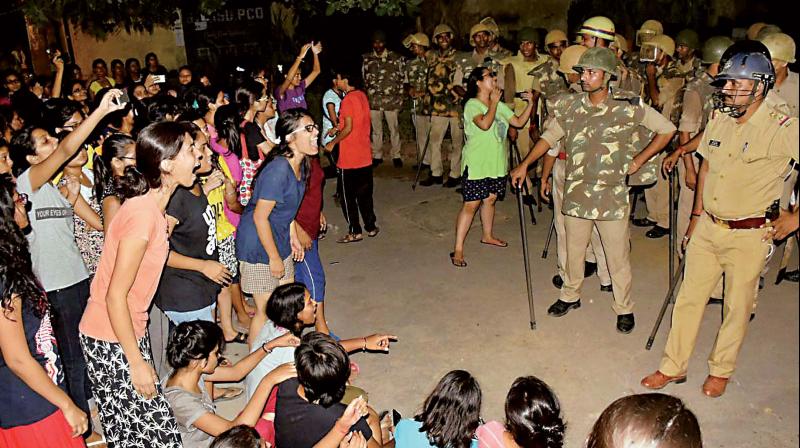BHU row: Varsity burying its head in sand
It would be useful to look at the larger context of learning from the prism of the recent developments at BHU.

As one reviews developments in India’s higher education, especially the events on the Benares Hindu University (BHU) campus over the last weekend and at the Jawaharlal Nehru University (JNU) and University of Hyderabad (UoH) in the recent past, one is struck by the fact that the focus on learning both within the formal spaces of the classroom and the informal environs of campuses is on the back-burner. It would be useful to look at the larger context of learning from the prism of the recent developments at BHU.
There are multiple dimensions to the events at the university : the role and attitude of the leadership, the inherent gender based discrimination that is still rampant, the use of brute force at a place of learning, and the side-tracking of the principal objective that institutions of higher education need to focus on. Each of these issues merit detailed attention and analysis.
Firstly, when the controversy broke out, the attitude of the leadership at the university clearly indicated what its priorities were. If a Vice Chancellor of an institution of research, learning and excellence characterises the incident such as this as a “simple act of eve teasing,” it speaks volumes about his attitude and approach. It also indicates the priorities of those who head institutions of higher learning. What gender justice, gender sensitivity and gender empowerment can one expect from leaders who dismiss a condemnable episode in this manner?
Less than a year ago a leading television channel had broken a story on developments in BHU and the pathetic silence of it key administrators. It is clear that no concrete remedial steps have been taken by the leadership since. If prompt action had been taken, it’s possible that the current episode may not have occurred.
The strategy of the leadership has three clear elements: deny the seriousness of the incident, deploy force to quell a legitimate agitation, and deflect attention away from the episode by blaming outside elements. The Vice Chancellor thought it fit not to go to the scene of the problem and defended his absence on the ground that the agitators were not students of the university. The university leadership also found it convenient to deflect attention away from the main issue by focusing on the “politicisation” of the campus. It is important to assert that if the atmosphere at university campuses has become vitiated it is largely due to the leadership failing to be proactive in its approach. It may also be relevant to add that the “political” colour that decides leadership appointments in public educational institutions inhibits the capacities of the holders of these positions to stay away from political influences.
Universities as spaces of learning should ideally, seek solutions to challenges through negotiation, discussion and dialogue, rather than resorting to the use of force at the first possible instance. One concedes that when the situation goes out of control it may be inevitable to bring in the police and leave it to them to restore law and order. However, allowing the situation to degenerate to such an extent that the presence of the police becomes necessary reflects a clear failure of the university leadership to create the right atmosphere on the campus. Even a casual (some would say even flippant) comment by the head of an institution that we must have an “army tank” in the central square of the university to instill a sense of patriotism, is alarming as it implies that open dialogue, debate and discussions are not the strength of an educational institution, but presence of symbols of physical power and force are more effective!
A final point. Institutions of higher education are today no longer occupying the spotlight for their high quality research, teaching excellence or larger contribution to society, but for all the wrong reasons. If research, teaching-learning and social outreach are the principal goals of a university, should not all stakeholders nurture such an environment in an educational institution? Recent incidents clearly indicate that what grabs public attention are episodes, experiences and encounters, which are not even remotely connected to any form of meaningful learning and pursuit of knowledge. Making universities spaces for cutting edge research and quality teaching-learning engagement will require a multi-pronged strategy, sustained and implemented over a period of time. A good beginning would be freeing university campuses from overt and covert forms of political control and restoring the neutrality, autonomy and competence of their administrators. A tall order no doubt, but then as one of my teachers rightly put it just as I was about to write this, “the collapse of education is the collapse of the nation.”

